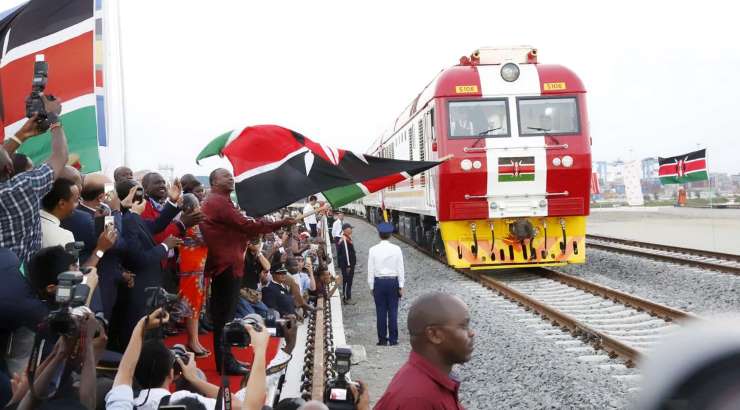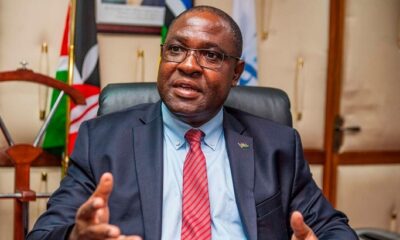Infrastructure
History made as Kenya launches Sh327bn standard gauge railway
The railway has cut the journey between Mombasa and Nairobi from eight hours to four and a half.

Kenya has inaugurated its standard gauge railway between Mombasa and Nairobi, cutting the 480-kilometre journey between the two cities from eight hours to four and a half.
Kenyan President Uhuru Kenyatta, who flagged off the new railway’s cargo operations in Mombasa on Wednesday afternoon, hailed the facility, which cost Sh327 billion, as vindication of his infrastructure policies as he campaigned for re-election ahead of polls on August 8.
“The foundations we lay today will lead us to a new chapter of industrialisation,” Mr Kenyatta said as he promised to fast track the establishment of Special Economic Zones along the standard gauge railway.
The Mombasa-Nairobi standard gauge railway was built by the China Road and Bridge Corporation, which signed a deal with the Kenya Railways Corporation for feasibility studies and preliminary designs for the project in 2009.
The railway project, which has been under construction since November 2013, is 472.3 kilometres long – 442.6 kilometres of which run at grade and the remaining 29.7 kilometres comprising the total bridge length.
“There are 33 stations along the line, of which two will be traffic hubs at both ends and eight will be intermediate stations while 23 will be passing stations,” Atanasa Maina, Kenya Railways managing director, said in a past press briefing.
The Mombasa-Nairobi SGR line is designed with an axle load of 25 tonnes and is expected to move up to 22 million tonnes of cargo per year at a speed of 80-100km/hr for freight trains. Passenger trains are, on the other hand, expected to achieve speeds of up to 120km/hr.
The second phase of the Kenya standard gauge railway, which is set to cost Sh153 billion, will extend to Naivasha and will eventually be extended to Malaba, western Kenya, from where it will link up with the Uganda line and ultimately extend to Kigali in Rwanda.
In December, the government announced fresh plans for the electrification of the Mombasa-Nairobi line, at a cost of Sh49 billion.
Transport and Infrastructure cabinet secretary James Macharia said 609 kilometres of railway track would be made electric following a deal reached with Uganda and Rwanda.
“The protocol signed between the four (East African) countries was to do an electric track. In Kenya, we started with a diesel one but we need to convert it to electric before Uganda commissions their bit, which is in about five years,” Mr Macharia said.
The Mombasa-Nairobi railway is 90 per cent funded (Sh294.3 billion) by the China Exim Bank, with Kenya financing the remaining 10 per cent (Sh32.7 billion).
The completion of the first phase of the Kenya standard gauge railway project has given Chinese contractors a more solid footing in the country, which is currently undertaking massive rail and road infrastructure projects.












